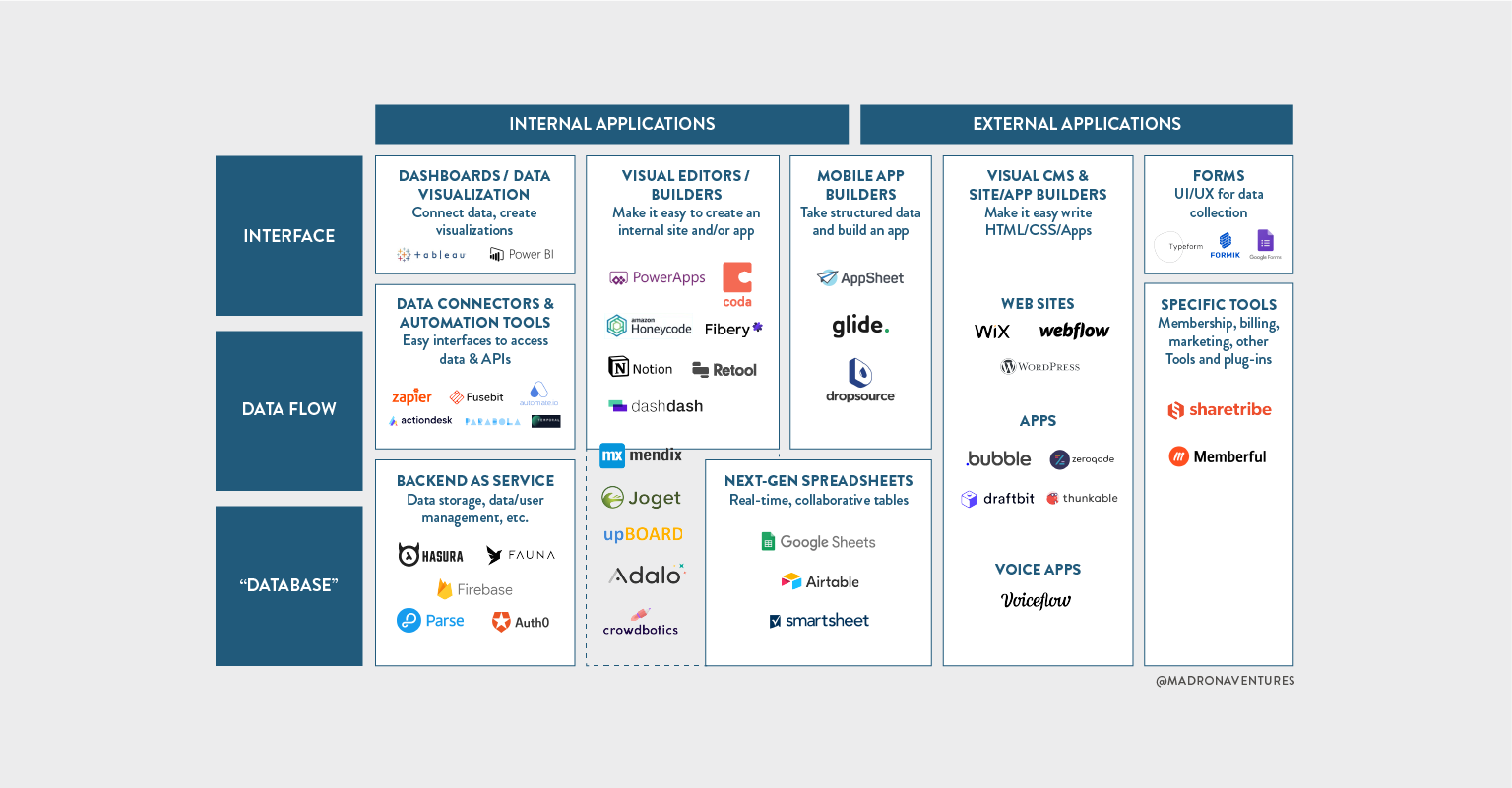Just How No-Code Tools Simplify Open Platform Database Development for Everybody
Just How No-Code Tools Simplify Open Platform Database Development for Everybody
Blog Article
Discover How Scalable Databases Can Be Utilized Without Coding to Improve Your Service Workflow
In today's busy business atmosphere, the capacity to take care of and analyze information effectively is vital. Scalable data sources, specifically when coupled with no-code options, provide a transformative approach that encourages non-technical customers to simplify procedures. By using tools that require no coding know-how, organizations can boost their operational abilities while minimizing dependence on IT sources. Nonetheless, the real concern exists in recognizing how these options can be tailored to particular company requirements and what potential difficulties might arise in their implementation. Exploring these facets can light up the path to operational quality.
Comprehending Scalable Data Sources
Scalable databases are important for modern-day business procedures, enabling companies to successfully manage boosting volumes of data without sacrificing efficiency. These data sources are created to adjust and grow to the changing demands of a service, ensuring that they can handle bigger datasets and more intricate queries as organizational demands progress.
Recognizing scalable databases includes acknowledging their two primary types: vertical scaling and horizontal scaling. Vertical scaling, or "scaling up," involves adding even more power (CPU, RAM) to an existing server to improve efficiency. On the other hand, straight scaling, or "scaling out," involves including much more web servers to disperse the load, which frequently results in greater adaptability and mistake tolerance.
Another vital element is the style of scalable databases, which can be either relational or non-relational. Relational data sources, such as MySQL and PostgreSQL, are structured and make use of SQL for questions, while non-relational databases, like MongoDB and Cassandra, supply even more versatility with disorganized data.
Eventually, recognizing scalable databases is crucial for organizations aiming to take advantage of data as a calculated possession, enabling them to stay affordable in an increasingly data-driven setting.

Advantages of No-Code Solutions
Opening the capacity of no-code solutions empowers companies to streamline operations and boost efficiency without the need for comprehensive programs knowledge. These systems permit non-technical customers to develop, modify, and take care of databases effortlessly, thus democratizing access to innovation throughout groups.
Among the main benefits of no-code remedies is their rate of execution. Businesses can rapidly release applications and automate processes, dramatically minimizing the moment invested on advancement cycles. This agility makes it possible for companies to respond without delay to market adjustments and customer demands, fostering an one-upmanship.
In addition, no-code platforms decrease dependence on IT departments for day-to-day jobs, permitting technological groups to concentrate on more complicated projects that call for specialized skills. This change not just enhances resource allocation however likewise promotes technology within the company.
Cost-effectiveness is an additional advantage, as no-code options can lower growth and upkeep expenditures. By decreasing the requirement for coding experience, companies can harness the capacities of their existing labor force without the expenses of employing added personnel.
Popular No-Code Database Equipment
The look at this website surge of no-code solutions has actually resulted in the development of numerous data source devices that cater to companies seeking performance and access. These devices empower users with restricted technological know-how to produce, take care of, and control data sources flawlessly.

Caspio stands out for its ability to develop web applications with no coding. It allows services to create durable databases and deploy applications promptly, dealing with numerous industry demands. Propensity offers powerful information and straightforward user interfaces monitoring capacities, enabling companies to build customized applications tailored to their workflows.

Use Instances in Business Procedures
Exactly how can businesses take advantage of database devices to improve their procedures? Scalable data sources offer organizations with powerful capacities to manage and assess data without the requirement for substantial coding knowledge. These tools can simplify different organization procedures, ultimately bring about improved performance and performance.
One prominent usage instance is consumer relationship administration (CRM) Services can utilize scalable data sources to track consumer communications, preferences, and comments, enabling personalized communication and better solution. By centralizing this information, groups can collaborate better and respond to consumer demands in real-time.
An additional substantial application is stock administration. Companies can utilize no-code database devices to keep track of stock degrees, track deliveries, and projection demand. This guarantees optimal supply degrees, lowers waste, and minimizes stockouts.
Furthermore, job monitoring can profit from scalable databases by enabling teams to handle tasks, target dates, next and sources in a merged system. With real-time updates and data visualization, project supervisors can make informed choices.
Getting Going With Application
Implementing scalable databases in service procedures needs a structured method to ensure effective integration and application. The primary step is to perform a comprehensive requirements evaluation, determining specific service requirements, information kinds, and anticipated growth patterns. This foundational understanding will guide the option of the proper database solution.
Next, choose an easy to use, no-code data source platform that lines up with your functional objectives. no-code. Lots of contemporary services offer intuitive user interfaces, allowing non-technical individuals to manage data effectively. After choosing a system, develop a clear data architecture that outlines just how information will be arranged, accessed, and kept
Training is crucial; make certain that employee are furnished with the essential skills to make use of the database. Think about giving tutorials or workshops to acquaint staff with the system's functionalities.
Final Thought
In final thought, the combination of scalable databases with no-code remedies offers considerable advantages for company procedures. Eventually, leveraging these modern technologies can lead to enhanced performance and operational effectiveness, placing companies for sustained development in an affordable landscape.
One prominent no-code data source tool is Airtable, which integrates the performance of a spread sheet with the power of a data source.Just how can companies take advantage of data source tools to article source enhance their procedures? Businesses can use scalable databases to track client interactions, choices, and comments, allowing individualized communication and much better solution.Implementing scalable databases in service procedures requires a structured approach to guarantee effective assimilation and usage.In final thought, the assimilation of scalable data sources via no-code options offers considerable benefits for business operations.
Report this page